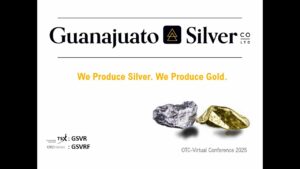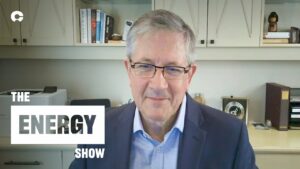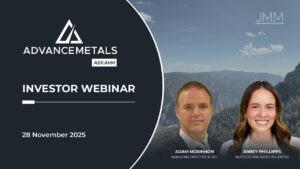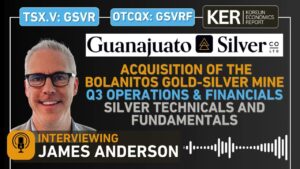WINNEMUCCA, NEVADA–(Marketwired – April 15, 2013) – Paramount Gold and Silver Corp. (NYSE MKT:PZG)(TSX:PZG)(FRANKFURT:P6G)(WKN:A0HGKQ) (“Paramount”) announced today that the Preliminary Economic Assessment (“PEA”) for its 100%-owned San Miguel gold and silver project located in Chihuahua State, Mexico has been filed on SEDAR. The PEA was prepared by Metal Mining Consultants (“MMC”) of Denver (http://www.metalminingconsultants.com), formerly Scott E. Wilson Consulting Inc., a respected engineering team with experience in mid-size projects like San Miguel. The PEA resource model was developed by Mine Development Associates (“MDA”) of Reno, Nevada. The PEA confirms that the San Miguel project represents an unusually robust economic opportunity to develop a low cost mine in the prolific Sierra Madre belt in Mexico. Highlights of the PEA include: — Low Initial Capital of $232 Million — Estimated Average Annual Production of 57,300 ozs. Gold and 3.1 Million ozs. Silver for 14 Years — Estimated Base Case Pre-Tax NPV of US$707 Million at a 5% Discount Rate and IRR of 33.2% — Study confirms outstanding potential to continue adding to resources MMC concludes that: “Considering the robust economics, coupled with relatively low start- up capital, significant exploration upside and a jurisdiction that is favorable for mining, San Miguel represents a project that has the potential to become a very successful mine.” In their analysis, MMC proposed a 4,000 tonnes per day mill fed by open pits and underground mines, resulting in a projected 14 year operation with a total metal production of 803,000 ounces of gold and 43.2 million ounces of silver (1,637,000 ounces of gold equivalent at the base case gold-to-silver price ratio of 51.7 to 1). Start-up capital costs including working capital are estimated at $243 million. Sustaining capital costs over the project’s life are projected to be an additional $227 million. With $70.3 million in contingencies, total life-of-mine capital costs are estimated at $540 million. Projected life-of-mine average cash operating costs are $512 per ounce of equivalent gold recovered. The total cost of production (including cash operating costs and total capital and contingency costs over the life of the mine) is estimated at US$842 per ounce of gold equivalent MMC notes these costs are “well below those being experienced by senior, intermediate and junior gold producers in the current market environment.” At a gold price of $1500 per ounce and a silver price of $29 per ounce (the 3 year trailing average of gold and silver prices at end of January 2013), San Miguel has an estimated $1.1 billion pre-tax net cash flow, a $707 million pre-tax net present value (“NPV”) at a 5% discount rate and a highly accretive internal rate of return of 33.2%. At recent spot prices of $1600 gold and $33 silver, San Miguel’s projected economics improve to $1.3 billion in pre-tax net cash flow, $893 million of net present value at a 5% discount rate and a 39.3% IRR. At recent metal price highs of $1,900 per ounce of gold and $36 for silver, the estimated NPV rises to $1.2 billion with a 48.3% IRR. Mineral Resources In September 2012, MDA completed a National Instrument 43-101 compliant global resource estimate for the San Miguel project (see news release dated September 5, 2012). The San Miguel database used for MDA’s resource estimate includes 511 core and reverse circulation drill holes totaling over 128,000 meters. MMC has determined that the most suitable mining scenario for the project is an underground operation for the high grade Don Ese, a combination of open pit and underground mining for La Union and San Miguel and open pit extraction for San Antonio and San Francisco. A PEA provides a basis to estimate project operating and capital costs and establish a projection of the potential mineable resource including measured, indicated and inferred categories as permitted under National Instrument 43-101. The total exploitable mineral resources from the MDA model used by MMC to estimate open pit and underground mining are as follows(i): —————————————————————————- Measured and Indicated Open Pit Resources —————————————————————————- Class Tonnes Ag g/T Ag Oz. Au g/tT Au Oz.—————————————————————————-San Miguel Measured 91,000 221 644,000 1.6 5,000San Miguel Indicated 1,698,000 132 7,223,000 0.8 44,000San Antonio Measured 286,000 103 947,000 –San Antonio Indicated 2,117,000 118 8,029,000 0.02 2,000La Union Indicated 541,000 102 1,768,000 0.6 10,000La Veronica Indicated 113,000 104 377,000 0.2 1,000—————————————————————————-Total M&I 4,846,000 122 18,988,000 0.39 61,000—————————————————————————-—————————————————————————- Inferred Open Pit Resource —————————————————————————- Class Tonnes Ag g/T Ag Oz. Au g/T Au Oz.—————————————————————————-San Miguel Inferred 993,000 63 2,015,000 0.7 21,000San Francisco Inferred 1,055,000 54 1,816,000 0.7 25,000La Veronica Inferred 673,000 95 2,059,000 0 2,000San Antonio Inferred 757,000 129 3,136,000 0.10 1,000La Union Inferred 623,000 93 1,866,000 0.3 6,000Monte Cristo Inferred 690,000 70 1,544,000 0.1 2,000—————————————————————————-Total Inferred 4,792,000 81 12,436,000 0.37 57,000—————————————————————————-—————————————————————————- Measured and Indicated Underground Resources —————————————————————————- Class Tonnes Ag g/T Ag Oz. Au g/tT Au Oz.—————————————————————————-Don Ese Indicated 2,277,000 172 12,609,000 2.6 191,000San Miguel Measured 398,000 102 1,309,000 1.7 22,000San Miguel Indicated 1,293,000 75 3,122,000 1.9 79,000La Union Measured 200,000 16.5 106,000 3.7 24,000La Union Indicated 768,000 25.5 630,000 3.9 96,000—————————————————————————-Total 4,936,000 112 17,776,000 2.60 412,000—————————————————————————- —————————————————————————- Inferred Underground Resources —————————————————————————- Class Tonnes Ag g/T Ag Oz. Au g/tT Au Oz.—————————————————————————-Don Ese Inferred 2,179,000 149 10,462,000 2.5 176,000San Miguel Inferred 797,000 66 1,695,000 1.8 47,000La Union Inferred 942,000 23.5 711,000 3.5 106,000—————————————————————————-Total Inferred 3,918,000 102 12,868,000 2.61 329,000—————————————————————————-(i) rounding may cause discrepancies Note: Mineral resources that are not mineral reserves do not have demonstrated economic viability. The PEA also incorporates inferred mineral resources which are considered to be too geologically speculative to have the economic considerations applied to them that would enable them to be categorized as mineral reserves and, as such, do not have demonstrated economic viability. There can be no certainty that the estimates contained in the PEA will be realized. Metallurgy & Processing MMC concluded that test work performed at McClelland Laboratories Inc. in Sparks, Nevada, has provided a reliable basis for deriving gold and silver recoveries for each of the deposits included in this PEA. MMC used gold and silver recoveries specific to each of the deposits. Overall, gold recoveries exceeded 90 percent and silver recoveries averaged above 70 percent in cyanide leach bottle roll tests at a grind of 74 microns. Estimates of cyanide and lime consumptions have also been obtained from the test work and were used to develop the processing methodology. The economic scenario defined by MMC incorporated a conventional 4,000 tonne per day mill facility followed by agitated cyanide leach in tanks with a Merrill Crowe recovery circuit which would produce a dore bar. Mine Planning The PEA recommends combined conventional open pit and underground mining operations. The recommended open pit mining method is conventional drilling and blasting with mineralized material and overburden loaded into rigid frame haul trucks. Mechanized underground mining would be from sublevel open stoping with delayed backfilling. A vertical mining sequence was assumed based on panels defined by local bottom elevations from which vertical overhand mining would proceed. Where required, the panel bottom was assumed to be filled with cemented rockfill, to create intermediate sills to allow underlying panels to be developed later in the production schedule as mining advanced vertically downward. The majority of stope backfilling would use uncemented development waste (unmineralized material) or open pit waste backhauled from the surface. These mining methodologies are in common use in this region of Mexico. Key production statistics are as follows: —————————————————————————- Open Pit Underground—————————————————————————-Mined Mineralization (000 tonnes) 9,637 8,855—————————————————————————-Mined Resource Classification: Measured (% of tonnes mined) 4 7 Indicated (% of tonnes mined) 46 49 Inferred (% of tonnes mined) 50 44—————————————————————————-Contained Ag (000 ounces) 31,423 30,643Contained Au (000 ounces) 118.3 741.1—————————————————————————-Strip ratio (waste:ore) or UG 7.69 2.54Unmineralized:Mineralized Material ratio —————————————————————————- —————————————————————————-Annual Gold Production (oz) 57,300—————————————————————————-Process Gold Recovery (average) 93%—————————————————————————-Annual Silver Production (oz) 3,082,500—————————————————————————-Process Silver Recovery (average) 70%—————————————————————————-Capital Costs Capital costs were developed based on scaling costs from similar facilities with comparable production rates and from design basis assumptions. The costs are collected in three separate categories; (1) Initial capital (construction costs to initiate mining operations including EPCM, pre-stripping and start-up working capital), (2) Sustaining capital (costs due to delayed construction of the underground mines below open pit, plus additions to the mobile mining equipment fleet and equipment rebuilds, and (3) Contingency estimates. The estimated capital costs are as follows: —————————————————————————-Capital Category Millions—————————————————————————-Initial Capital $243.1—————————————————————————-Sustaining Capital $227.3—————————————————————————-Contingency $70.3—————————————————————————-Total Capital Expenditures $540.7—————————————————————————-Operating Costs Operating costs are based on similar mining operations in the immediate area of San Miguel and on information from other mining operations in North America using similar mining methods. Operating cost estimates are as follows: —————————————————————————- $/Tonne—————————————————————————-Open Pit Waste Mining $1.59—————————————————————————-Open Pit Ore Mining $1.59—————————————————————————-Open Pit Mining per tonne processed $14.16—————————————————————————-Underground Drifting $39.00—————————————————————————-Underground Drop Raise $27.75—————————————————————————-Underground Stoping $27.75—————————————————————————-Underground Mining per tonne processed $37.41—————————————————————————-Mill Processing $13.75—————————————————————————-Administration $5.00—————————————————————————-Reclamation per tonne/processed $1.62—————————————————————————-Total Operating Cost per tonne/processed $45.31—————————————————————————-Economic Analysis The base case economic evaluation used historical three-year trailing averages for gold and silver prices This approach is consistent with the guidance of the United States Securities and Exchange Commission, is accepted by the Ontario Securities Commission and is industry standard. A second case was prepared using recent spot prices for gold and silver. The pre-tax results for the base case and spot case are as follows: —————————————————————————- Base Case Spot Case—————————————————————————-Gold Price Per Ounce $1,500 $1,600Silver Price Per Ounce $29 $33—————————————————————————-Net Cash Flow $1.1 billion $1.3 billion—————————————————————————-NPV @ 5% Discount Rate $707 million $893 million—————————————————————————-Internal Rate of Return 33.2% 39.3%—————————————————————————-Operating Costs Per Ounce of Gold Equivalent Produced (life of mine) $512 $495—————————————————————————-Total Costs Per Ounce of Gold Equivalent Produced (includes amortized capital costs) $842 $814—————————————————————————-Infrastructure The development of mining and processing infrastructure was defined in a conceptual plan that was based on a central processing facility with an associated tailings storage facility. Individual open pit mines would be developed as satellite production operations with mineralized material transported to the process site by haul truck. A main electrical power line and power center would be developed at the process facility, with individual power lines going to the underground mining operations at Don Ese, San Miguel and La Union. Each underground mining operation would have separate infrastructure including offices, warehouse, equipment shop, change house, shotcrete plant, cemented fill plant, explosive storage and fuel storage. Underground mines would have separate ventilation and dewatering systems because of their location remote from each other. Access/haul roads would be developed to each mining operation. It is assumed that personnel for the mining operation would live in the local communities or the Town of Temoris and that no camp facility would be constructed. Please click here to see a map of the proposed milling site and zone locations. National Instrument 43-101 Disclosure The PEA for the San Miguel project was prepared by Metal Mining Consultants of Denver, Colorado and incorporates the work of its professional Geologists, Metallurgist and Mining Engineers who are Qualified Persons in their areas of expertise as defined under National Instrument 43-101. Resource estimates and block models were developed by Michael Gustin of MDA Reno who is also a Qualified Person. Patricia Aguayo from Hermosillo, Mexico has advised on environmental planning and regulations in Mexico. All persons involved are independent of Paramount. Each of these consultants has reviewed and approved this news release. About Paramount Gold Paramount Gold is a U.S. based exploration and development company with multi-million ounce advanced stage precious metals projects in Nevada (Sleeper) and northern Mexico (San Miguel). Fully funded exploration programs are now in progress at these two core projects which are expected to generate substantial additional value for our shareholders. The 100% owned San Miguel Project consists of over 142,000 hectares (353,000 acres) in the Palmarejo District of northwest Mexico, making Paramount the largest claim holder in this rapidly growing precious metals mining camp. The current work program at San Miguel is part of Paramount’s strategy of expanding and upgrading known, large-scale precious metal occurrences in established mining camps, defining their economic potential and then partnering them with nearby producers. The San Miguel Project is ideally situated near established, low cost production where the infrastructure already exists for early, cost-effective exploitation. Paramount also owns 100% of the Sleeper Gold Project which is emerging as one of Nevada’s largest new undeveloped gold resources. Cautionary Note to U.S. Investors Concerning Estimates of Indicated and Inferred Resources All resource estimates reported by the Corporation were calculated in accordance with the Canadian National Instrument 43-101 and the Canadian Institute of Mining and Metallurgy Classification system. These standards differ significantly from the requirements of the U.S. Securities and Exchange Commission. Mineral resources which are not mineral reserves do not have demonstrated economic viability. In particular, Paramount notes that the San Miguel Preliminary Economic Assessment referred to above incorporates inferred mineral resources which are considered to be too geologically speculative to have economic considerations applied to them that would enable them to be categorized as mineral reserves. Therefore, Paramount advises that there can be no certainty that the estimates contained in the San Miguel PEA will be realized. Safe Harbor for Forward-Looking Statements This document contains “forward-looking information” within the meaning of Canadian securities legislation and “forward-looking statements” within the meaning of the United States Private Securities Litigation Reform Act of 1995. This information and these statements, referred to herein as “forward-looking statements”, are made as of the date of this document. Forward-looking statements concerning the expected design, economic viability or performance of the San Miguel project as set out in the PEA, the completion of goals or objectives, or the completion of work programs, relate to future events or future performance and reflect current estimates, predictions, expectations or beliefs regarding future events and include, but are not limited to, statements with respect to: (i) the amount and category of mineral resources; (ii) the amount of future production over any period; (iii) cumulative pre-tax net cash flow of the proposed mining operation; (iv) capital costs; (v) operating costs; (vi) mining rates; (vii) mine life; and (vii) planned expenditures. Any statements that express or involve discussions with respect to predictions, expectations, beliefs, plans, projections, objectives, assumptions or future events or performance (often, but not always, using words or phrases such as “expects”, “anticipates”, “plans”, “projects”, “estimates”, “envisages”, “assumes”, “intends”, “strategy”, “goals”, “objectives” or variations thereof or stating that certain actions, events or results “may”, “could”, “would”, “might” or “will” be taken, occur or be achieved, or the negative of any of these terms and similar expressions) are not statements of historical fact and may be forward-looking statements. All forward-looking statements are based on Paramount’s or its independent consultants’ current beliefs as well as various assumptions made by them and information available to them on the date the statements are made. These assumptions include: (i) the presence of and continuity of metals at the Project at modeled grades; (ii) the capacities of various machinery and equipment; (iii) the availability of personnel, machinery and equipment at estimated prices; (iv) metals sales prices; (v) appropriate discount rates; (vi) tax rates and royalty rates applicable to the proposed mining operation; (vii) financing structure and costs; (viii) anticipated mining losses and dilution; (ix) metals recovery rates; (x) reasonable contingency requirements; and (xi) receipt of regulatory approvals on acceptable terms. Although management considers these assumptions to be reasonable based on information currently available to it, they may prove to be incorrect. Many forward-looking statements are made assuming the correctness of other forward-looking statements, such as statements of cumulative pre-tax net cash flow, which are based on other forward-looking statements and assumptions. The cost information is also prepared using earlier values, but the time for incurring the costs will be in the future and it is assumed costs will remain stable over the relevant period. By their very nature, forward-looking statements involve inherent risks and uncertainties, both general and specific, and risks exist that estimates, forecasts, projections and other forward-looking statements will not be achieved or that assumptions do not reflect future experience. We caution readers not to place undue reliance on these forward-looking statements as a number of important factors could cause the actual outcomes to differ materially from the beliefs, plans, objectives, expectations, anticipations, estimates, assumptions and intentions expressed in such forward-looking statements. These risk factors may be generally stated as the risk that the assumptions and estimates expressed above do not occur, but specifically include, without limitation, risks relating to variations in the mineral content within the material identified as mineral reserves from that predicted; variations in rates of recovery and extraction; developments in world metals markets;, increases in the estimated capital and operating costs or unanticipated costs; difficulties attracting the necessary work force; increases in financing costs or adverse changes to the terms of available financing, if any; tax rates or royalties being greater than assumed; changes in development or mining plans due to changes in logistical, technical or other factors; changes in project parameters as plans continue to be refined; risks relating to receipt of regulatory approvals; the effects of competition in the markets in which Paramount operates; operational and infrastructure risks; and the additional risks including those described in Paramount’s most recent Annual Report Form 10-K filed with the U.S. Securities and Exchange Commission on EDGAR (available at www.sec.gov/edgar.shtml) and SEDAR in Canada (available at www.sedar.com). Paramount cautions that the foregoing list of factors that may affect future results is not exhaustive. When relying on our forward-looking statements to make decisions with respect to Paramount, investors and others should carefully consider the foregoing factors and other uncertainties and potential events. Paramount does not undertake to update any forward-looking statement, whether written or oral, that may be made from time to time by Paramount or on our behalf, except as required by law. |
If you no longer want to receive announcements from us, please reply to this e-mail. |
CONTACT INFORMATION: |
Paramount Gold and Silver Corp. |
















